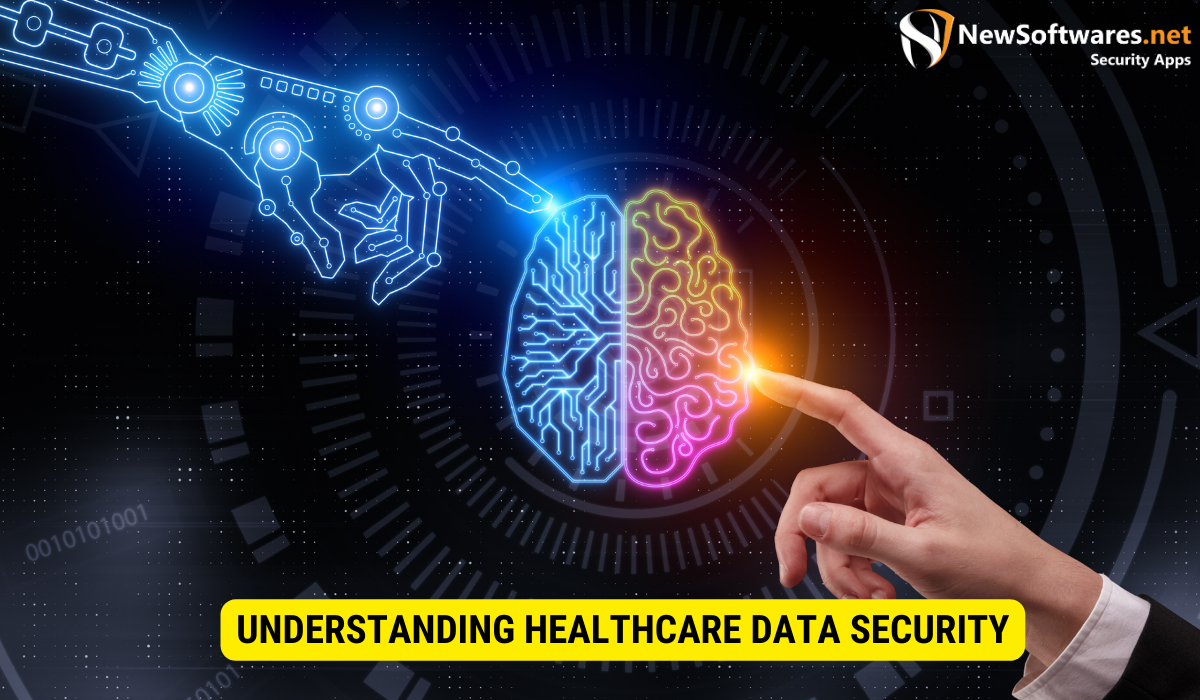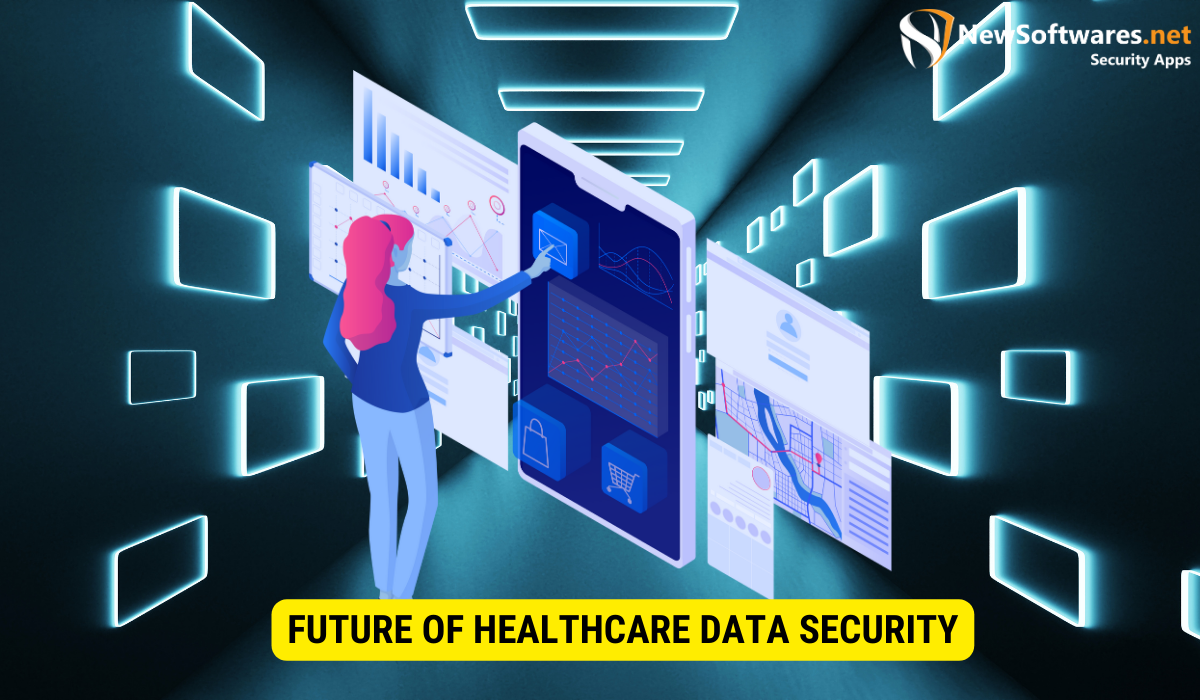In today’s digital age, healthcare data security has become a paramount concern. With the rapid advancements in technology, the healthcare industry has witnessed a significant increase in data breach incidents, leading to compromised patient information and potential harm to individuals. In this comprehensive analysis, we will delve into the principal threat to healthcare data security and explore strategies to mitigate this threat effectively.
Understanding Healthcare Data Security

Before we can identify the principal threat to healthcare data security, it is essential to have a comprehensive understanding of what data security entails in the healthcare industry.
Data security in healthcare refers to the measures and protocols implemented to protect sensitive patient information from unauthorized access, modification, or disclosure. It encompasses various aspects such as physical security, network security, encryption, access controls, and employee education on data protection.
When it comes to physical security, healthcare organizations employ various strategies to ensure the safety of patient data. This includes implementing restricted access to areas where patient information is stored, such as server rooms or data centers. Additionally, surveillance systems, alarms, and biometric authentication methods are often utilized to prevent unauthorized entry.
Network security is another critical aspect of healthcare data security. Healthcare organizations rely heavily on computer networks to store and transmit patient information. To protect this data from potential threats, robust firewalls, intrusion detection systems, and encryption technologies are implemented. Regular network monitoring and vulnerability assessments are also conducted to identify and address any potential weaknesses.
Encryption plays a vital role in securing healthcare data. It involves converting sensitive information into a code that can only be deciphered with the appropriate encryption key. This ensures that even if data is intercepted, it remains unreadable and unusable to unauthorized individuals. Encryption is commonly used when transmitting patient data over networks or storing it on portable devices such as laptops or USB drives.
Access controls are implemented to restrict access to patient data only to authorized individuals. This involves assigning unique user IDs and passwords to healthcare staff and implementing role-based access controls. These measures ensure that only those with a legitimate need to access patient information can do so, reducing the risk of unauthorized disclosure or modification.
Employee education on data protection is crucial in maintaining healthcare data security. Healthcare organizations provide training programs to their staff, educating them on the importance of data security and the potential risks associated with mishandling patient information. This includes teaching employees about phishing scams, social engineering tactics, and the proper handling of sensitive data.
Importance of Data Security in the Healthcare Industry
Data security is of utmost importance in the healthcare industry due to several factors. Firstly, it ensures patient privacy, maintaining confidentiality and trust between patients and their healthcare providers. Patients share highly personal and sensitive information with their healthcare providers, and it is essential that this information remains private and protected.
Secondly, data security prevents medical identity theft, which can have severe consequences for patients. Medical identity theft occurs when someone fraudulently uses another person’s identity to obtain medical services or prescriptions. This can lead to financial loss, as the victim may be held responsible for medical bills incurred by the thief. Moreover, it can also compromise healthcare decisions, as incorrect information may be added to the victim’s medical records, leading to potentially harmful treatments or misdiagnoses.
Lastly, data security safeguards against potential legal and regulatory repercussions. Healthcare organizations are subject to strict data protection regulations, such as the Health Insurance Portability and Accountability Act (HIPAA) in the United States. Failure to comply with these regulations can result in hefty fines and legal penalties. By implementing robust data security measures, healthcare organizations can ensure compliance and avoid costly legal battles.
The Landscape of Healthcare Data Threats
The healthcare industry operates in an environment filled with numerous data threats. Understanding these threats is crucial in developing effective strategies to protect healthcare data.
Healthcare organizations face a wide range of data threats that can compromise the security and privacy of patient information. These threats not only pose a risk to individual patients but also to the overall integrity of the healthcare system.
One common type of data threat in healthcare is malware attacks. Malware, short for malicious software, is designed to infiltrate computer systems and steal sensitive data. In the healthcare context, malware can be particularly devastating as it can lead to the unauthorized access of patient records, exposing personal and medical information to unauthorized individuals.
Phishing attempts are another significant data threat in the healthcare industry. Phishing involves the use of deceptive emails, messages, or websites to trick individuals into revealing their personal or login information. Healthcare professionals and patients alike can fall victim to these scams, resulting in the compromise of sensitive data.
Ransomware attacks have also become increasingly prevalent in the healthcare sector. Ransomware is a type of malware that encrypts data and demands a ransom for its release. When healthcare organizations fall victim to ransomware attacks, they face the difficult decision of whether to pay the ransom or risk losing access to critical patient data.
Insider threats, though less common, can also pose a significant risk to healthcare data security. These threats involve individuals within the organization who have authorized access to sensitive data but misuse or disclose it without proper authorization. Insider threats can be intentional, such as employees seeking financial gain, or unintentional, such as employees accidentally sharing sensitive information.
In addition to digital threats, physical theft of healthcare data remains a concern. Physical theft can occur when devices containing patient information, such as laptops or portable storage devices, are lost or stolen. This type of threat highlights the importance of implementing strict physical security measures to protect healthcare data.
Emerging Threats in Healthcare Data Security
As technology continues to evolve, new threats to healthcare data security emerge. These emerging threats require healthcare organizations to stay vigilant and adapt their security measures accordingly.
The Internet of Things (IoT) has introduced a new set of vulnerabilities to healthcare data security. With the increasing use of connected medical devices, such as wearable health trackers and remote patient monitoring systems, the potential attack surface for cybercriminals has expanded. Healthcare organizations must ensure that these devices are properly secured and regularly updated to mitigate the risk of IoT-related data breaches.
Telemedicine, the practice of providing remote healthcare services through telecommunications technology, has also introduced unique data security challenges. The transmission of patient data over networks and the storage of electronic health records in cloud-based systems create additional points of vulnerability. Healthcare providers must implement robust encryption and authentication protocols to protect patient data during telemedicine consultations.
Cybercriminals are becoming increasingly sophisticated in their methods, making it crucial for healthcare organizations to proactively monitor and adapt their security measures. Advanced persistent threats (APTs), for example, are long-term targeted attacks that aim to gain unauthorized access to healthcare networks. These attacks often involve a combination of social engineering, zero-day exploits, and advanced malware, making them difficult to detect and mitigate.
In conclusion, the landscape of healthcare data threats is ever-evolving, requiring healthcare organizations to remain vigilant and proactive in their data security efforts. By understanding the common types of threats and staying ahead of emerging risks, healthcare providers can better protect patient data and maintain the trust of their patients.
Principal Threat to Healthcare Data Security
Now that we have a clear understanding of healthcare data security and the landscape of threats, let us delve into the principal threat that poses the highest risk.
Identifying the Principal Threat
After careful analysis and expert opinions, it has become apparent that the principal threat to healthcare data security is cyberattacks. Cyberattacks encompass a range of tactics, such as hacking, malware, and social engineering, all designed to gain unauthorized access to sensitive healthcare data.
Impact of the Principal Threat on Healthcare Data
The consequences of cyberattacks on healthcare data can be severe. Patient information can be stolen or compromised, leading to identity theft, financial fraud, and even medical fraud. Additionally, healthcare organizations may suffer reputational damage, legal penalties, and a loss of public trust.
Mitigating the Principal Threat to Healthcare Data Security
Now that we understand the gravity of the principal threat, it is imperative to explore effective strategies for mitigating this risk.
Strategies for Threat Mitigation
Developing a robust cybersecurity framework is vital to mitigating the principal threat to healthcare data security. This framework should include comprehensive risk assessments, regular employee training, strong access controls, data encryption, network monitoring, and incident response plans. Collaboration with cybersecurity experts and continuous evaluation of security measures are essential in staying one step ahead of cyber attackers.
Role of Technology in Mitigating Data Threats
Technology plays a pivotal role in mitigating healthcare data threats. Advanced cybersecurity tools, such as intrusion detection systems, threat intelligence platforms, and behavioral analytics, can detect and respond to cyber threats in real-time. Additionally, the implementation of secure telehealth platforms and encrypted communication channels can help protect patient data during remote consultations.
Future of Healthcare Data Security

Looking ahead, healthcare data security will continue to evolve in response to emerging threats and advancements in technology.
Predicting Future Threats to Healthcare Data Security
As technology advances, new threats will inevitably arise. Artificial intelligence-driven attacks, targeted ransomware, and data breaches through medical devices are potential future threats. Continuous monitoring and adaptation to these evolving threats will be critical in securing healthcare data.
Innovations in Data Security for Healthcare
To tackle future threats, innovations in data security are essential. Encrypted data storage, blockchain technology for secure and transparent healthcare records, and artificial intelligence for anomaly detection are just a few examples of innovations that will shape the future of healthcare data security.
Key Takeaways
- Data security is vital in maintaining patient privacy, preventing medical identity theft, and adhering to legal and regulatory requirements.
- Cyberattacks pose the principal threat to healthcare data security, with far-reaching consequences for patients and healthcare organizations.
- Mitigating this threat requires a robust cybersecurity framework and the proactive use of technology.
- The future of healthcare data security will require continuous monitoring, adaptation to emerging threats, and innovative solutions.
FAQs
What is healthcare data security?
Healthcare data security involves protecting sensitive patient information from unauthorized access, modification, or disclosure.
What are the principal threats to healthcare data security?
The principal threats include cyberattacks such as hacking, malware, and social engineering.
How can healthcare organizations mitigate the principal threat?
Healthcare organizations can mitigate the principal threat by implementing a robust cybersecurity framework, including risk assessments, employee training, access controls, encryption, and incident response plans.
What role does technology play in healthcare data security?
Technology plays a crucial role in mitigating data threats, with advanced tools and platforms helping detect and respond to cyberattacks.
What does the future hold for healthcare data security?
The future of healthcare data security will involve continuous monitoring, adaptation to emerging threats, and innovations such as encrypted storage, blockchain technology, and artificial intelligence.
Conclusion
In conclusion, the principal threat to healthcare data security is cyberattacks, which can have devastating consequences for both patients and healthcare organizations. By understanding the nature of these threats and implementing robust cybersecurity measures, healthcare organizations can secure patient data and maintain trust in an increasingly digital healthcare landscape. The future of healthcare data security will rely on continuous vigilance, adaptation to emerging threats, and innovative solutions to safeguard sensitive information.
